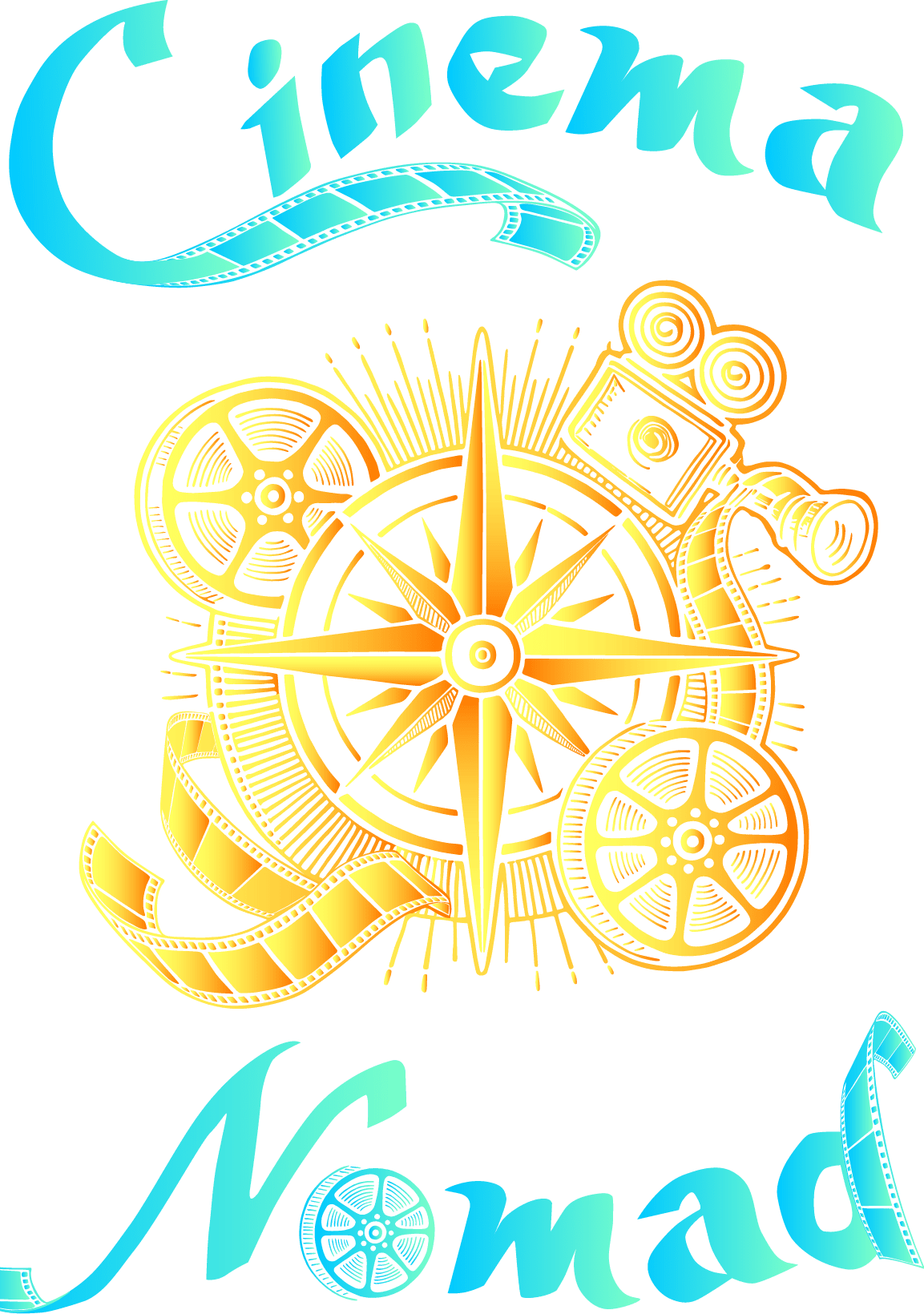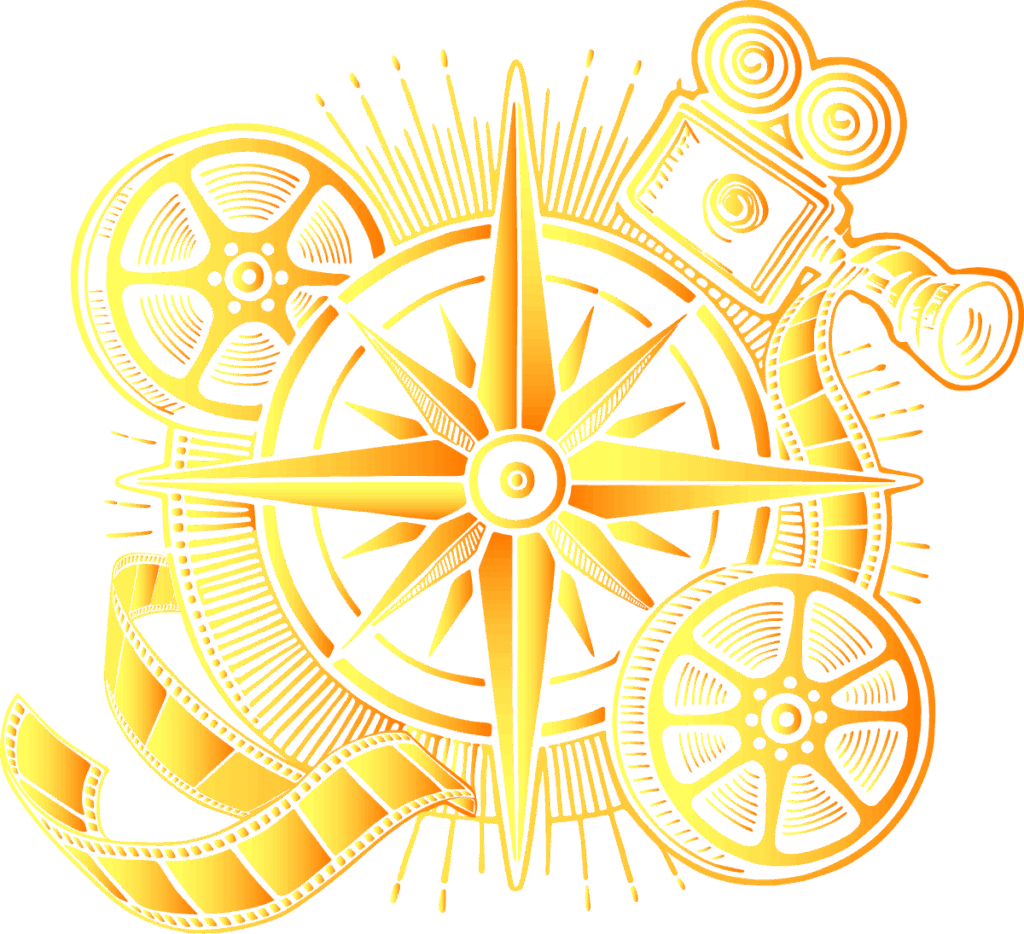
Cambodia
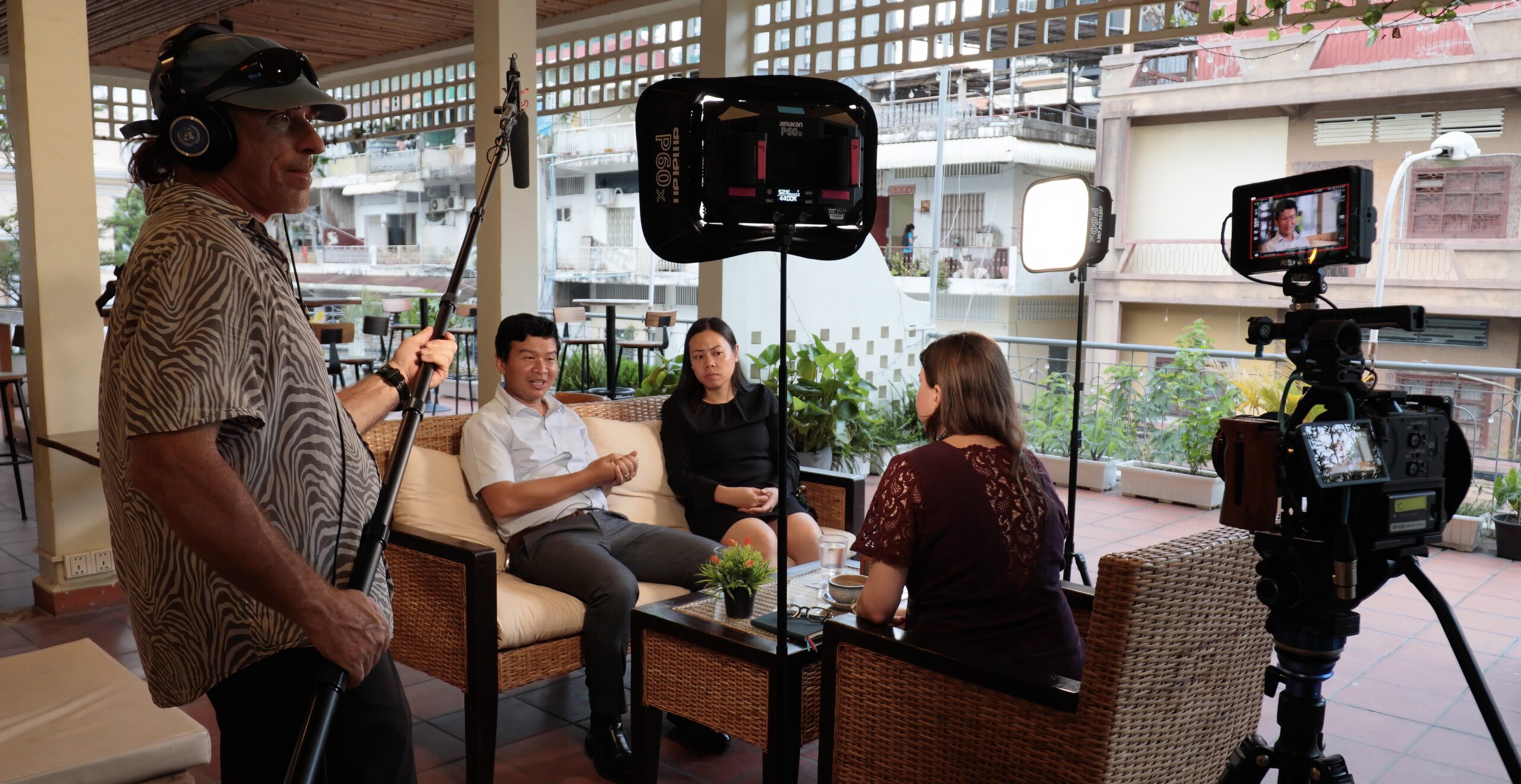
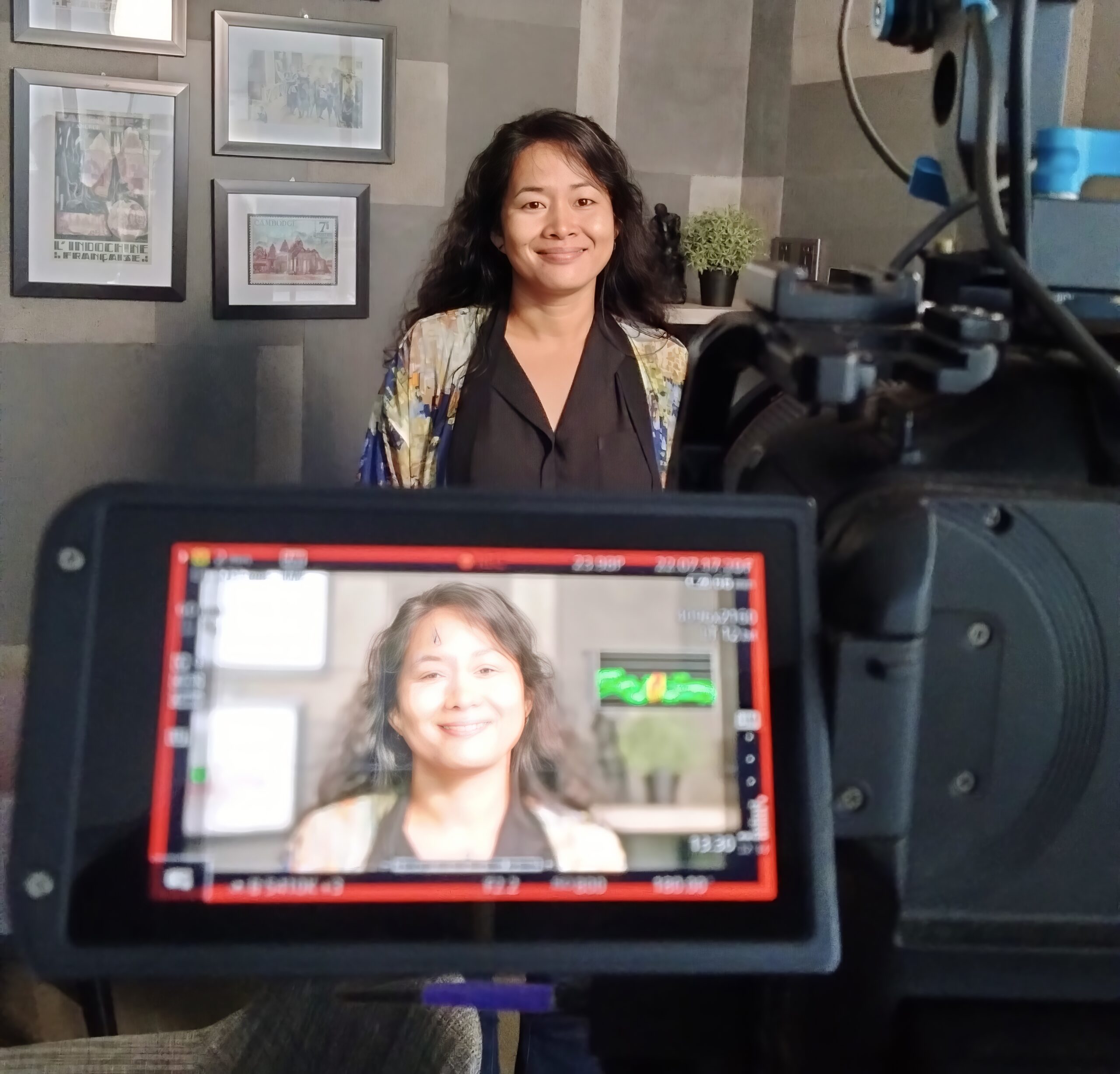
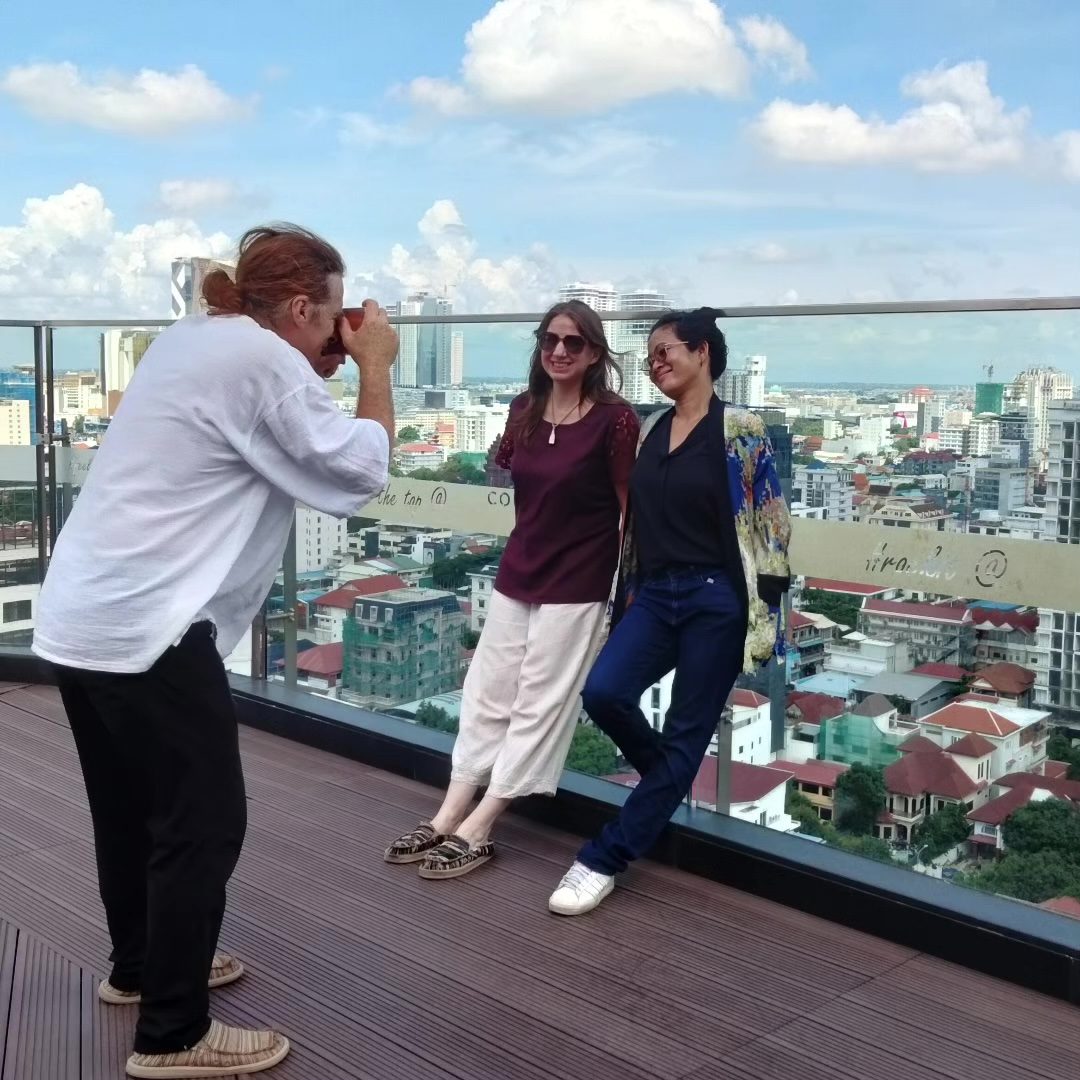
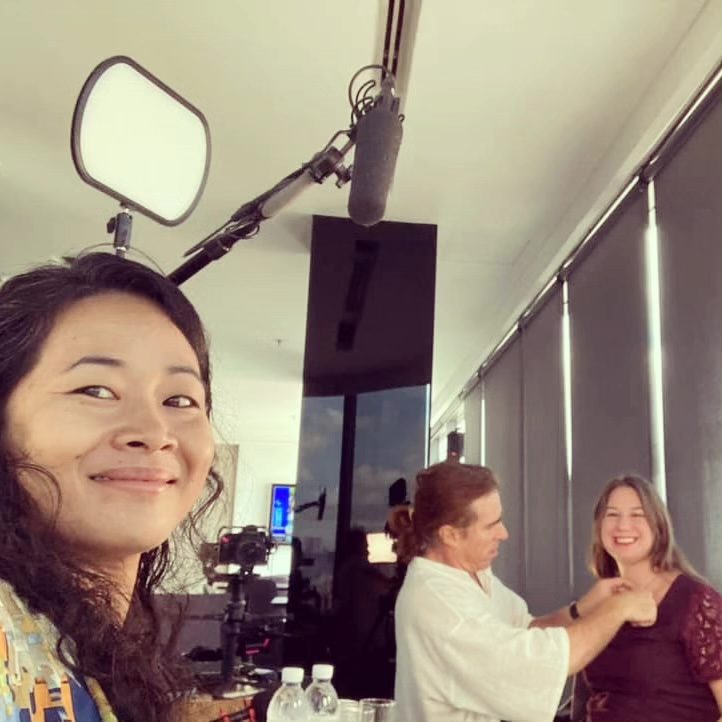
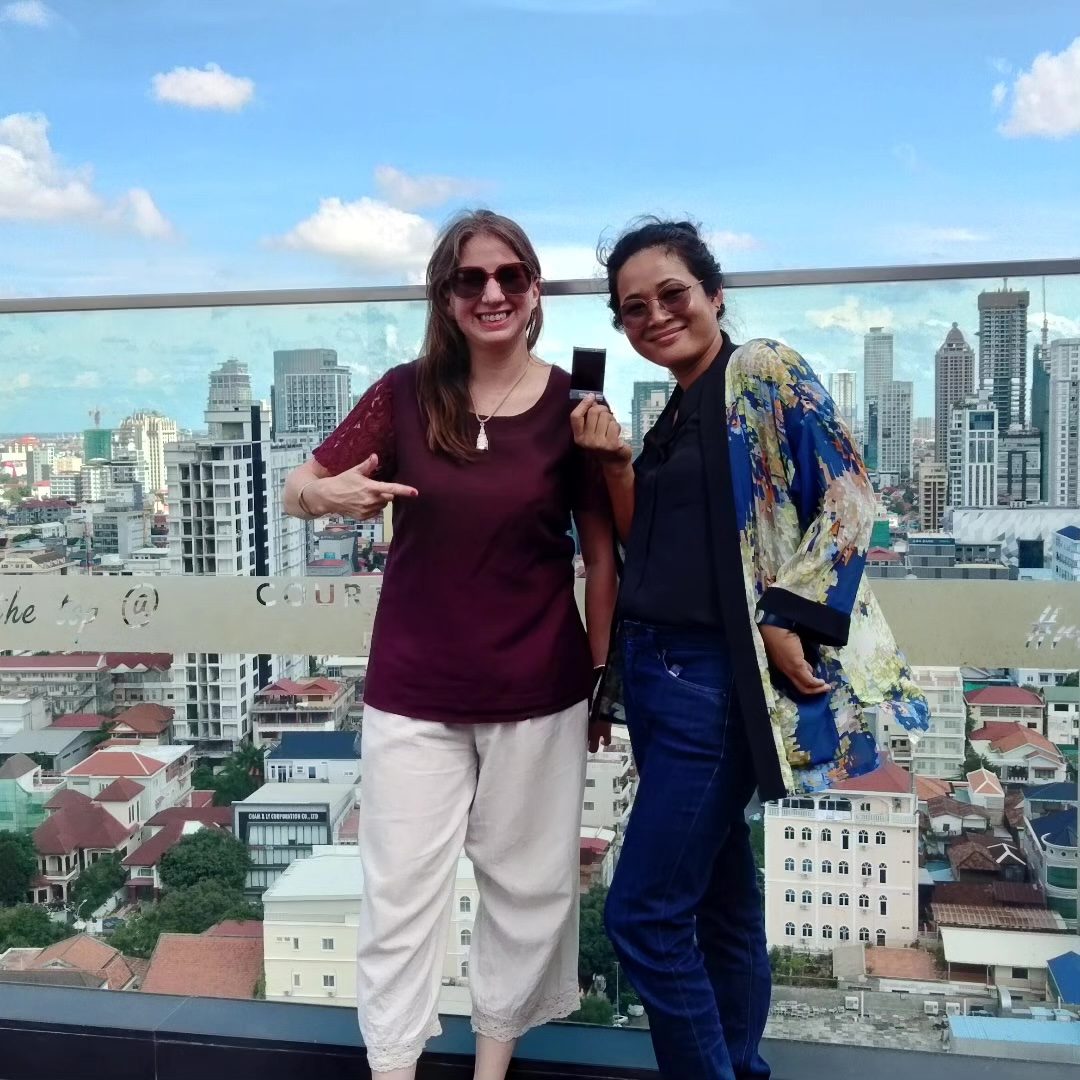
111: Cambodia
Cambodia has a rich tradition of storytelling from ancient times to today. We meet Ines, who grapples with historical trauma by telling fable-like stories as metaphors to the past. From ancient temples of Angkor; to luscious rice fields; the hip-hop art scene of Battambang, and the French Colonial whims of Phnom Penh; Cambodia is full of color, joy and a revival to the tune of better days ahead.
Where Were You at 33?
Name: Ines Sothea
Place: Phnom Penh, Cambodia
Age at Filming: 33
Personal logline: Caught between the commercial and the arthouse, just trying to tell my truths for a generation in transition, remembering the past while aiming for meaningful change.
Directed by Ines: “Rice” (2014), “Love 2 The Power of 4” (2017) co-directed with Deependra Gauchan, “Life. Love. Bliss.” (2020), “Khamao Rouge” (2023), “Homecoming Waves” (2025)
Ines’ Instagram: @sotheaines
Ines’ Bio:
Ines is a Cambodian screenwriter, director and producer. She wrote, directed and produced her debut short film “Rice,” which won Best Film at Tropfest South East Asia 2014 in Penang. She joined the LATC Global Film & TV Program in Los Angeles and attended the American Film Market. Ines has several short films and two feature films to her credit that have been awarded in Cambodia and screened at international film festivals. Other work includes TV series, web series and commercials, as well as training for young filmmakers, in partnership with the Department of Cinema & Cultural Diffusion of the Ministry of Culture and Fine Arts.
More About Ines:
http://www.banyanblog.org/young-leaders/sothea-ines-24-filmmaker
Cinema of Cambodia
The history of Cambodian cinema begins in the 1950s. Previously, only foreigners had made movies in Cambodia, mostly short documentaries.
Som Sam Al is considered to be the first local commercial filmmaker, having screened his 16mm silent movie “Blossoming Flower, Withering Flower” in cinemas in 1958.
At this time, the leading filmmaker of Cambodia was King Norodom Sihanouk, who, at 19, bought himself a 16mm camera to shoot short films.
King Sihanouk wrote, directed, produced, and starred in at least nine feature films, and in his decades-long career, he made at least 50 shorts, features and documentaries.
His first feature film was “Apsara” in 1966. Other films include, “Shadows Over Angkor” (1967), “Joy of Life” (1969), “Twilight” (1969), and “Rose of Bokor” (1969).
King Sihanouk was one of the most prolific filmmakers in all of Southeast Asia. He saw filmmaking as a key to nation building, and he wanted to celebrate Khmer culture and arts through his storytelling.
Sihanouk was a musician, too, and composed the music scores of his films. One of his wives, “the Queen Mother,” was a dancer and headed up the Royal Ballet. They encouraged the production of arts as part of Khmer heritage to be proud of. Under Sihanouk, each ministry was required to have its own orchestra.
It is said the King disliked the foreign films that came to shoot in Cambodia, such as “Lord Jim” starring Peter O’Tool, which had more of an outsider’s gaze on his country.
French filmmaker Marcel Camus also visited Cambodia to film “Bird of Paradise” (1962). which at least used a Khmer cast and crew. This shoot ended up inspiring some locals to become filmmakers, such as Yvon Hem, and his sister Nerie Hem, who worked on and acted in the film respectively.
King Sihanouk sent a few Cambodians to France to study film. Most of these trained filmmakers then returned home to Cambodia and worked on many of the King’s films. He continued to make films through 2006 and passed away in 2012.
The most prolific time in Cambodian cinema history was the Golden Era, which lasted from around 1960 to 1975, when over 300 films were made. These movies were often influenced by Cambodian mythology and folklore: stories with flying horses, witches and giants. The most popular films of the era include the “Snake King’s Wife,” “12 Sisters,” “Khmer After Angkor,” “The Snake Hair Girl,” and “The Crocodile Man.”
Tragically, only 33 of these Golden Era films remain.
The Golden Era came to a stark and abrupt end once the Khmer Rouge took over in 1975. These films were banned and destroyed, and many of the filmmakers, actors and artists were killed, including Vichara Dany, Som Van Soudany, and Kong Sam Oeun.
Popular singers, Sinn Sisamouth and Seroy Sothea were also killed by the Khmer Rouge. They were considered “the soul of the Cambodian people,” and their music was featured in many Golden Era films.
From 1967-1975, Cambodia had its own Civil War, changing the landscape of Phnom Penh, yet movies were still being made and screened.
With support from North Vietnam and eventually China, The Khmer Rouge, a Communist-influenced guerrilla group, fought Lon Nol’s government.
Although King Sihanouk previously was opposed to the Khmer Rouge, while in exile, he went on National Radio and compelled the people of Cambodia to join the Khmer Rouge revolutionaries to fight against Lon Nol. As a result, many villagers joined in because they wanted their King back. This action helped prop up the Khmer Rouge, though quite possibly, also saved Sihanouk’s life.
On April 17, 1975, the Khmer Rouge marched into Phnom Penh and “liberated” the city and defeated Lon Nol once and for all. This same day, or right after, the U.S. had completely left Cambodia, evacuating all of their remaining staff.
The Khmer Rouge told the people of Phnom Penh that everybody must evacuate the city, taking only what they can carry, because “the Americans are going to bomb the city.”
This was not true.
They also promised, “you can return in three days, when it’s safe again.”
Also not true.
In reality, this was part of a plan to start “Year Zero” and create a “Utopia” where there are no cities, no educated elites, no artists, musicians, filmmakers, no banking or currency; no foreign languages. Just peasants and farmers and communal living.
People were marched for days and moved to the countryside and forced into work camps to farm rice paddies and dig ditches, dams, canals. Cultivated rice was shipped to China in exchange for weapons. Everyone was expected to serve and honor “Angkor” (the “organization”) over kin.
People who moved from the cities, those considered to be the elite, and the artists were all called “New People” and treated worse. Minorities, too, such as the Chams (Muslim Khmers) were treated very poorly. Anyone associated with Lon Nol’s government was killed. People with glasses were killed. (The exception being Brother #2.) People who openly spoke French were killed. Professors, doctors, and educated people were killed. Recognizable pop singers, actors and directors, killed. As the years went on, more and more Khmer Rouge soldiers who were suspected traitors or flawed, were also killed. One wonders, who is left to serve this new Cambodia?
It is estimated that a quarter, or even a third of the population was killed or died during the Khmer Rouge times. At least 2 million people!
Everyone was required to wear black “pajamas” and were served very limited meals. Nutrition was so bad, many died of starvation, others malaria. Families were separated, and sometimes there were mass forced marriages within the Khmer Rouge system. This is depicted in the documentary by Lida Chan and Guillaume Suon, “Red Wedding: Women Under The Khmer Rouge” (2o12).
So come 1975, cinema as we knew it was gone. The physical cinema: theaters. of which there were approx. 35 in Phnom Penh previously, were either abandoned, destroyed, bombed out, hiding refugees, or turned into torture centers. Movies were destroyed; considered too Western.
The only filmmaking left was for the Khmer Rouge to document the activities of Angkor: soldiers were given cameras and trained by Chinese filmmakers on how to use them.
Footage shot by the Khmer Rouge was occasionally screened at rural workgroup meetings in order to demonstrate being a good member under the Angkor, or “Organization;” to prop up the new Democratic Kampuchea. These films show workers in fields and factories, at party meetings, and occasionally official state visits.
Today, the country’s archives at the Bophana Center has 78 of these Khmer Rouge films, which were restored in France. Some of these clips were shown as evidence in the Khmer Rouge Tribunal hearings.
Today, the leaders of the archives see these films as educational tools for future generations to learn and understand even the darkest of the country’s history.
Some filmmakers and actors were lucky and fled to other countries before it was too late. Most were not so lucky and were killed by the Khmer Rouge. For the “lucky” few filmmakers who lived, you can hear their stories in Davy Chou’s documentary film, “Golden Slumbers” (2011) about Cambodia’s cinema history.
In 1979, the Vietnamese “liberated” Cambodia and kicked out the Khmer Rouge, yet the Vietnamese still heavily controlled the Khmer population. Meanwhile, the Khmer Rouge kept waging guerilla warfare, mostly from the Western borderlands of Thailand, and with support from the U.S. and other Western powers, to fight the Vietnamese and get Cambodia back. Not until Pol Pot died in 1998 did things truly “calm down.”
Ten years or so later, in the early 1990s, the Paris Peace Accords required Vietnam to transition out of power, and elections were held for a “free, democratic Cambodia.”
Following the fall of the Khmer Rouge, as the country recovered, not many films were being made. Notable exceptions include, “My Mother is Arb,” a Khmer horror folk-story, released in 1980: it is considered the first film made after the fall of the Khmer Rouge.
In the 1990s, cinema started to re-emerge; though TV, and popular Thai or other foreign movies, made cinema less popular than before. At this time, filmmaker Rithy Panh emerged and became Cambodia’s most internationally recognized filmmaker.
At the end of the Khmer Rouge era, in 1979, when Rithy Panh was just 15-years-old, he escaped to Thailand to a refugee camp as the only survivor in his family. He then moved to Paris, attended a vocational school to study carpentry, and fell in love with filmmaking. In Paris, he graduated from the Institute For the Advanced Cinematographic Studies. Rithy returned to Cambodia to make films, with France as his home base. He is most known for “Rice People” (1994), which competed at Cannes and was the first Cambodian film submitted to the Oscars; followed by “One Evening After The War” (1998).
Many of Rithy Panh’s films deal with the horrors and truths and memories of life under the Khmer Rouge.
I particularly love his Oscar nominated movie, “The Missing Picture” (2013), which is a feature documentary made through hand-crafted stop motion. The film’s poetic narrations in French deal with language and memory and several profound statements stand out to me, including , “For a picture can be stolen, a thought cannot.”
Rithy Panh has become a mentor for Cambodia’s younger generations of aspiring filmmakers. He runs workshops and apprenticeship programs, and is the co-founder along with Leu Pannakar of the esteemed Bophana Center.
The Bophana Center opened in December 2006 as an archive for film, TV, photography and sound. It gives the public free access to these documents to discover and learn about Cambodia’s history and heritage. Additionally, it is a center to give practical training and professional support to young Cambodians and is a gathering center to encourage artistic discussion and creation. The Bophana Center has helped produce Cambodian films, including the documentary, “Red Wedding,” which shares the story of women who were forced to marry Khmer Rouge soldiers.
In 2002, “City of Ghosts” was released; a crime thriller directed by, co-written, and starring Hollywood heartthrob Matt Dillon. Filmed in Phnom Penh and Kampot, this is considered the first major foreign film to be shot in Cambodia post Khmer Rouge.
A year or two before this, Angelina Jolie first came to Cambodia to film the Hollywood Blockbuster, “Laura Croft: Tomb Raider,” which boosted the “street cred” of Angkor’s Ta Prohm Temple in Siem Reap, now a very popular spot for international tourists. It is said that the popularity of visiting Angkor Wat, and the Ta Prohm temple in particular, boosted exponentially after Tomb Raider’s release in 2001.
Possibly as a result of filming here, Ms. Jolie became more interested in Cambodia, and started her long career as a humanitarian; and even adopted a son from an orphanage in Battambang.
Jolie returned to Cambodia to direct the film, “First They Killed My Father,” adapted from the novel of the same name; a memoir written by Loung Ung, about her experiences surviving as a child in Khmer Rouge times. It’s a beautiful book, and the film, co-produced with Rithy Panh, does a nice job of putting us in the child’s point of view; we become as confused by the chaos of these unexplainable, horrific events, yet see it through a child-like innocence. Unlike other Hollywood films that attempt to tell the story of another country’s horrors, this one features a Cambodian cast and crew, and the dialogue remains in Khmer. We met several filmmakers whose lives were changed by the opportunity to work or act in this film.
In 2009, the Cambodian Film Commission was created, and In 2010, the Cambodia film fest was launched, which continues today, putting on film screenings, workshops, retrospectives and networking events for the local filmmaking community.
The twenty-teens have brought about a New Wave of filmmaking coming out of Cambodia. Leading this New Wave are the filmmakers who are part of the filmmaking collective and production company, Anti-Archive, founded in 2014 by Davy Chou, Steve Chen, and Kavich Neang.
Davy Chou’s debut film, “Diamond Island” created buzz around the world; followed by his 2022 film, “Return to Seoul,” which premiered at Cannes and was chosen as Cambodia’s entry to the 2023 Oscars. Davy was selected to be an Un Certain Regard jury member at the 2023 Cannes. (And both Davy and Kavich’s films were selected to the Oscars submissions in 2021 and 2022.)
Kavich Neang’s film “White Building” was awarded Best Actor at the Venice film festival and was Cambodia’s submission to the 2022 Oscars. “White Building” is a feature film that covers the themes and topics of his earlier documentary film, “Last Night I Saw You Smiling,” which chronicles the evacuation and demolition of the White Building apartment complex in Phnom Penh’s city center, where Kavich grew up and lived with his family until the residents of the apartment complex were forced out after the government sold it to a Japanese firm.
I especially love the silent moments in Kavich’s films. He takes the time to show you the world and landscapes — the city feels alive and vibrant — and you get a sense of the protagonist longing for some sort of emotional connection with his family and friends.
Suggested Reading:
KON: The Cinema Of Cambodia
Remnants of the Past: A filmography of Early Cambodian Cinema by LinDa Saphan & Nate Hun
Some Websites that discuss Cambodian Cinema:
Bophana: AudioVisual Resource Center: https://bophana.org/
Cambodia Film Commission: https://cambodia-cfc.org/
https://ecufilmfestival.com/a-brief-introduction-to-cambodian-cinema/
https://bampfa.org/program/cambodian-cinema-rising-ashes
https://a-rabbitsfoot.com/editorial/confessions/the-search-for-home-with-davy-chou/
https://www.latimes.com/world-nation/story/2019-08-27/cambodia-independent-film
https://asianews.network/cambodias-cinematic-history-reflects-trends-changing-landscapes/
https://kiripost.com/stories/impact-of-art-on-social-change
https://www.phnompenhpost.com/lifestyle/battambangs-poy-chhunly-his-film-dream
https://en.wikipedia.org/wiki/Cinema_of_Cambodia
https://www.taipeitimes.com/News/feat/archives/2006/01/06/2003287766
https://www.khmertimeskh.com/501396497/cambodia-strives-to-bring-back-the-golden-age-of-cinema/
Suggested Films From or About Cambodia:
“Rice People” (1994) directed by Rithy Pahn
“The Killing Fields” (1984) directed by Roland Joffé
“Swimming To Cambodia” (1987) directed by Jonathan Demme
“One Evening After The War” (1998) directed by Rithy Pahn
“Golden Slumbers” (2011) directed by Davy Chou
“The Missing Picture” (2013) directed by Rithy Pahn
“The Last Reel” (2014) directed by Kulikar Sotho
“Don’t Think I’ve Forgotten” (2014) directed by John Pirozzi
“The Gate” (2014) directed Régis Wargnier
“The Killing Fields of Dr. Haing S. Ngor” (2015) directed by Arthur Dong
“Diamond Island” (2016) directed by Davy Chou
“The Man Who Built Cambodia” (2017) directed by Christopher Rompré
“First They Killed My Father” (2017) directed by Angelina Jolie
“Last Night I Saw Them Smiling” (2019) directed by Kavich Neang
“White Building” (2021) directed by Kavich Neang
“Meeting With Pol Pot” (2024) directed by Rithy Pahn
10 Khmer films you should know
From Kon Cinema
Mao Ayuth: Ne Sat Kror Per (The Crocodile, 2005)
Poan Phoung Bopha: Tek Chet Mday (Mother’s Heart, 2005)
Dy Saveth: Thida Sork Pous (The Snake Girl, 1972)
Yvon Hem: Sror Morl Anthakal (Shadow of Darkness, 1987)
Lay Ngounheng: Tep Sodachan (Tep Sodachan, 1968)
Tea Lim Koun: Pous Keng Korng (Snake King’s Wife, 1960s)
King Norodom Sihanouk: Rous Dory Sabbay (Joy of Life, 1968)
Fay Samang: Tum Teav (Tum Teav, 2003)
Ly BunYim: Puthisen Neang Korngrey (12 Sisters, 1968)
Rithy Panh: Yob Mouy Kroy Sangkream (One Evening After the War, 1997)

Official Name: Kingdom of Cambodia
Population: 17 million
Capital City: Phnom Penh
Form of Government: Parliamentary Constitutional Monarchy
Official Language: Khmer
Currency: Cambodian Riel
Borders: Thailand, Laos, Vietnam, Gulf of Thailand
About Cambodia
One of the most welcoming countries in the world, The Kingdom of Cambodia has a population of around 17 million. Cambodia has one of the youngest populations in the world, with a median age of 26-years-old.
The capital city is Phnom Penh, with a population of about 2.3 million, and the second largest city is Battambang with a population of around 1 million in the surrounding area.
Approximately 95% of the population of Cambodia is Theravada Buddhist. The majority of the people are ethnically Khmer, also the name of the language.
Situated on the Indochina peninsula, Cambodia, by landmass, is approximately the size of the U.S. state of Oklahoma, or one-third the size of France.
Cambodia is bordered by Laos to the North, Thailand to the West and North, Vietnam to the East, and the Gulf of Thailand to the Southwest. The Mekong River flows through East Cambodia (from Laos in the North) and at Phnom Penh it divides in two, exiting through South Vietnam. Through the Northwest it flows into the Tonle Sap Lake, which is Southeast Asia’s largest freshwater lake, and important to the ecosystem of Cambodia. This lake is considered to be “the heartbeat of Cambodia.”
The earliest settlers arrived in Cambodia around 50,000 years ago. It’s believed that rice cultivation originated in the region starting around the 3rd Century B.C.E. Trade with India and China occurred early on thanks to the ancient Silk Road and later due to the shipping routes around the Malay Peninsula.
According to National Geographic, the Mekong Delta served as a “midway point for goods passing between India and China.” As a result, over the decades, “Indianization was a gradual process over the first Millennium whereby the local populations chose to adopt various aspects of Indian cultural practices and beliefs and assimilate them into their existing Cambodian traditions.”
In addition to social practices, “the religions of Brahmanism, Hinduism, and Buddhism were also brought over from India.” While the earliest rulers of Cambodia tended to worship Hindu deities, both Hinduism and Buddhism influenced religious art and worship in Cambodia.
From the 800s to the 1400s C.E., Cambodia was the epicenter of the Khmer empire, a mighty hydraulic civilization, ruling over what is now Thailand, Vietnam, and Laos. There were upwards of maybe one million people!
It was an incredibly artistic civilization. Most known for Angkor Wat, the largest religious building ever constructed, with exquisite reliefs and carvings, including the celebrated Apsaras: dancing celestial nymphs derived from Hindu mythology.
There has been much conflict and tension over the centuries between Cambodian, and, both Thailand and Vietnam, including into the present. At times, Cambodia fell under the occupation of both Thailand and Vietnam.
From 1863 to 1953, Cambodia was a French Protectorate, while during World War II, Cambodia briefly fell under Japanese occupation.
After WWII, the French reconquered Cambodia and installed Norodom Sihanouk to the throne, the grandson of the previous King. Democratic elections were held in 1946 and 1947 for a French-style National Assembly.
In 1952, Sihanouk dismissed his cabinet and suspended the constitution to take over the government as Prime Minister, in addition to being the King. Through Sihanouk’s leadership, Cambodia gained its independence in 1953 and peace prevailed for a couple of decades.
In 1955, King Sihanouk abdicated the throne in favor of his father, Suramarit, so that Sihanouk, now Prince, could have an even bigger role in Cambodia’s political process. Though when his father died in 1960, Prince Sihanouk became the “defacto ruler.”
The 1950s and 1960s were considered Cambodia’s Golden Era for the arts: music, dance, cinema and architecture.
Meanwhile, the U.S. was embroiled in the Vietnam War, fighting with the South Vietnamese who wanted independence against the North Vietnamese and Viet Cong.
In the late 1960s to early ‘70s, American forces dropped 500,000 bombs onto Cambodia, a neutral country. This was done largely without the American public’s knowledge, allegedly in attempts to root out the Viet Cong hiding in Cambodia. These massive bombings destroyed villages, ancient temples, and killed far more Cambodians than the total number of U.S. casualties in the entire Vietnam War. This became known as Operation Menu (sometimes called Operation Breakfast).
The early 1970s brought a Civil War to Cambodia. King Sihanouk was overthrown in a bloodless coup, backed by the U.S., to install Lon Nol. The king was exiled and Lon Nol took over.
In “Swimming To Cambodia” (1987) a monologue-movie directed by Jonathan Demme about the making of the 1984 Hollywood film “The Killing Fields,” actor-comedian Spalding Grey says, “the only thing Americans know about Lon Nol is that Lon Nol spelled backwards is Lon Nol.”
On April 17, 1975, the communist influenced guerrilla group known as the Khmer Rouge, led by Brother Number One, or rather, Pol Pot, marched into Phnom Penh and forcibly evacuated the city; leading citizens into labor camps to return the country to what they called “Year Zero,” in a failed attempt to create an agricultural utopia.
In the three-and-a-half years during the Khmer Rouge regime, somewhere between a quarter and a third of the population was killed, many of whom were the country’s artists, filmmakers, musicians and intellectuals.
This devastating period lasted until January 7, 1979, when a Vietnamese puppet regime retook Phnom Penh and kicked out the Khmer Rouge. The Vietnamese ruled over Cambodia for another 10 years, while the Khmer Rouge still tried to fight back.
In 1991, King Sihanouk returned from exile, and the Paris Peace Agreements were signed, allowing Cambodia to hold their own elections in 1993.
After some disagreements in the election results, and some complicated shared power arrangement with the royal family’s political party, Hun Sen reigned over Cambodia as Prime Minister for nearly 40 years, becoming the world’s longest serving Prime Minister. In the 2023 elections, Sen was declared the winner, but instead, he transferred power to his son, the un-elected Hun Manet.
Today, Cambodia still has a constitutional monarchy. The King is now a mostly ceremonial position. The current King is Norodom Sihamoni, who took over from his father, Norodom Sihanouk, after he resigned in 2004. King Norodom Sihamoni was a professional ballet dancer and the former UNESCO Ambassador for Cambodia. Until his death, Siihanouk stayed on as an advisor, making him the Guiness Book of World Records holder for “the politician who has occupied the world’s greatest variety of political offices.” Norodom Sihanouk continued to make films, and died in 2012.
Cambodia is a country with some of the largest numbers of unexploded landmines or UXO in the world. Approximately 40,000 people have become amputees due to mines, and many have been killed. It’s estimated that approximately 6 million (or more) unexploded mines are still scattered around the countryside.
Chinese investment is currently big in Cambodia, especially around Sihanoukville, the port city. Many locals, especially in Phnom Penh and Sihanoukville face forced eviction as a result of this development.
For centuries, Cambodia’s economy has been based on agriculture, with much of the land cultivating rice and rubber. Food here is very fresh.
Family is the core of society; consensus and harmony are core values.
Throughout its history, Cambodia has had different names: Khmer Republic (1970 – 1975); Democratic Kampuchea (1976 – 1979); now the Kingdom of Cambodia.
The Cambodian flag displays an image of Angkor Wat, and it is the only national flag with a picture of a building on it.
About Phnom Penh:
Legend has it that in 1372, Phnom Penh was formed when a wealthy widow, Duon Penh, or Grandmother Penh, stumbled upon the hollow trunk of a koi tree, while strolling by the riverside. She discovered five Buddha statues within the tree. And so, on a small hill; or Phnom in Khmer; Grandmother Penh created a sanctuary for the deities. This mound became known as “Phnom Penh.”
In 1432, Phnom Penh first became a capital city under King Ponhea Eat who set up a Royal Palace and created five monasteries: Wats Botum, Koh, Langka, Ounalom, and Wat Phnom. All of these survive today.
According to Rough Guides, for unknown reasons, the capital moved away from Phnom Penh in the 16th century, and Phnom Penh became a fishing village. Eventually traders arrived and it became a prosperous port. Until “the Vietnamese invaded the Mekong Delta and cut off access to the sea. In 1770: Phnom Penh was burnt down by the Siamese, who took control of the country. The Vietnamese took back control, and in 1812 the city was the capital again.
In 1863, King Norodom signed a treaty to make Cambodia a French Protectorate, and Phnom Penh remained the defensive capital, regaining its access to the sea.
The French wanted the architecture of the city to reflect a “colonial town fit for the French administration.” By 1900, the city was laid out on a grid plan, with roads, a court of law, public works, a telegraph office, banks and schools.
The present day center of government, Phnom Penh has a population of 2.4 million, and its long tree-lined boulevards make it a pleasant city to explore.
One can explore the old French Quarter, enjoy the freshest of street foods, and marvel at some top destinations: the Independence monument, the National Museum, the Royal Palace, Wat Phnom, the Naga Bridge, and the lesser known Chinese Temple; all while riding around in Tuk Tuks and Remorques.
About Battambang (pronounced Battam-bong)
Local legend tells the story of a man, Dambang Krognuing, who stirred rice with a black stick; and after eating the rice, he turned black and gained super strength, allowing him to depose the King and take the throne. The King’s son eventually defeated Dambang thanks to the assistance of a flying horse. Dambang’s attempts to defeat the prince by hurling his black stick at the prince’s flying horse, failed. However, the town was named after this incident as Battambang translates to “lost stick” and a large statue of Dambang is displayed at a major traffic circle.
Battambang, with a population of approximately 200,000 (in the city itself; 1 million in the surrounding region), is a small but lively city in the Northwest of the country.
Founded in the 11th century, Battambang fell under Thai control for much of its history. Throughout the 19th century, Battambang became somewhat autonomous by being ruled as a fiefdom away from both Thai and Cambodian jurisdiction.
After the Khmer Rouge fell, they were pushed West to Pailin, and in 1994, the Khmer Rouge briefly captured Battambang. Battles ensued from the struggling Khmer guerrillas, with fighting taking place around Wat Banan and Phom Sampeu, through at least 1996. I visited both of these beautiful places while cycling around the surrounding countryside.
I loved Battambang! It has an artsy, small town feel and I enjoyed the youthful energy of the S’Arts Urban Fest, which took place in June, and featured mural paintings, hip hop and breakdance competitions, educational tours, workshops for kids and adults, culminating in a colorful parade with home made floats, performances, and circus acts!
The Phare Ponleu Selpak, now a well-regarded art school in Battambang, started by a French drawing instructor, Veronique Decrop, as a non-profit founded in 1986 in a refugee camp on the border between Cambodia and Thailand. The goal was to help children survivors of the Khmer Rouge use art to process their feelings and start to heal. She had nine students, and when the camp closed, they created a center in Battambang, which opened in 1994. Now thousands of students each year benefit from this school.
The Phare circus is now also a famed tourist attraction in Siem Reap — the students in Battambang train and hope to be selected for the Siem Reap one. It’s in the Guinness Book of World Records for the longest continuously running circus!
I thoroughly enjoyed the well crafted theatrics of this show: the apsara dancing; unicycles; aerial acrobatics; flame jugglers and music!
About Siem Reap:
Cambodia’s tourist-capital, Siem Reap is the most visited part of Cambodia thanks to its attractions through the Temples of Angkor Archeological Park, which spans over 155 square miles, situated between the Tonle Sap and the Kulen mountains.
Siem Reap translates to “defeat of the Siamese.”
Siem Reap lies on the Tonle Sap Lake and is surrounded by nearby floating villages and borders the Kulen Mountains. Little is known about the history.
Three Things To Do in Cambodia
- Get off the beaten track and visit some of the more remote temples, such as the ones in Banteay Chhmar, where you can participate in a local homestay that provides cultural activities run by a warm, welcoming and well community collective.
- Take a cycling and rafting trip along the Mekong River and seek out the unique Irrawaddy dolphins
Take some time for R&R on one of Cambodia’s idyllic and low-key islands.
Three Things To Do in Phnom Penh
- Visit the National Museum to learn more about the history, culture and archeology of Cambodia.
- Take a tuk tuk tour or historical remorque tour of Phnom Penh
Explore the culinary scene of Phnom Penh
Stephanie’s Top 3 Travel Tips to Visit Cambodia
- Learn a little bit about the do’s and don’ts of Khmer culture through reading CultureSmart! Cambodia edition.
Bring U.S.D. cash, and know that you cannot exchange riels outside of Cambodia.
As always, double check your visa requirements for entering and exiting the country.
Suggested Reading:
First They Killed My Father by Luong Ung
The Gate by François Bizot
We Didn’t Start The Fire by Sam Rainsy
Useful Links:
- Mr History’s A Super Quick History Of Cambodia
- Crash Course: Water and Classical Civilizations
- Lonely Planet
- Britannica
- National Geographic
- https://www.nationalgeographic.com/travel/destination/cambodia
- https://www.nationalgeographic.com/travel/article/alternatives-to-angkor-wat
- https://www.nationalgeographic.com/travel/article/culinary-guide-cambodia-ancient-recipes-street-food
- https://www.nationalgeographic.com/travel/article/author-dee-peyok-cambodia
- Atlas Obscura
- CIA World Factbook
- BBC Country Profile
- WikiVoyage
- Facts, Stats, and Travel Blogs:

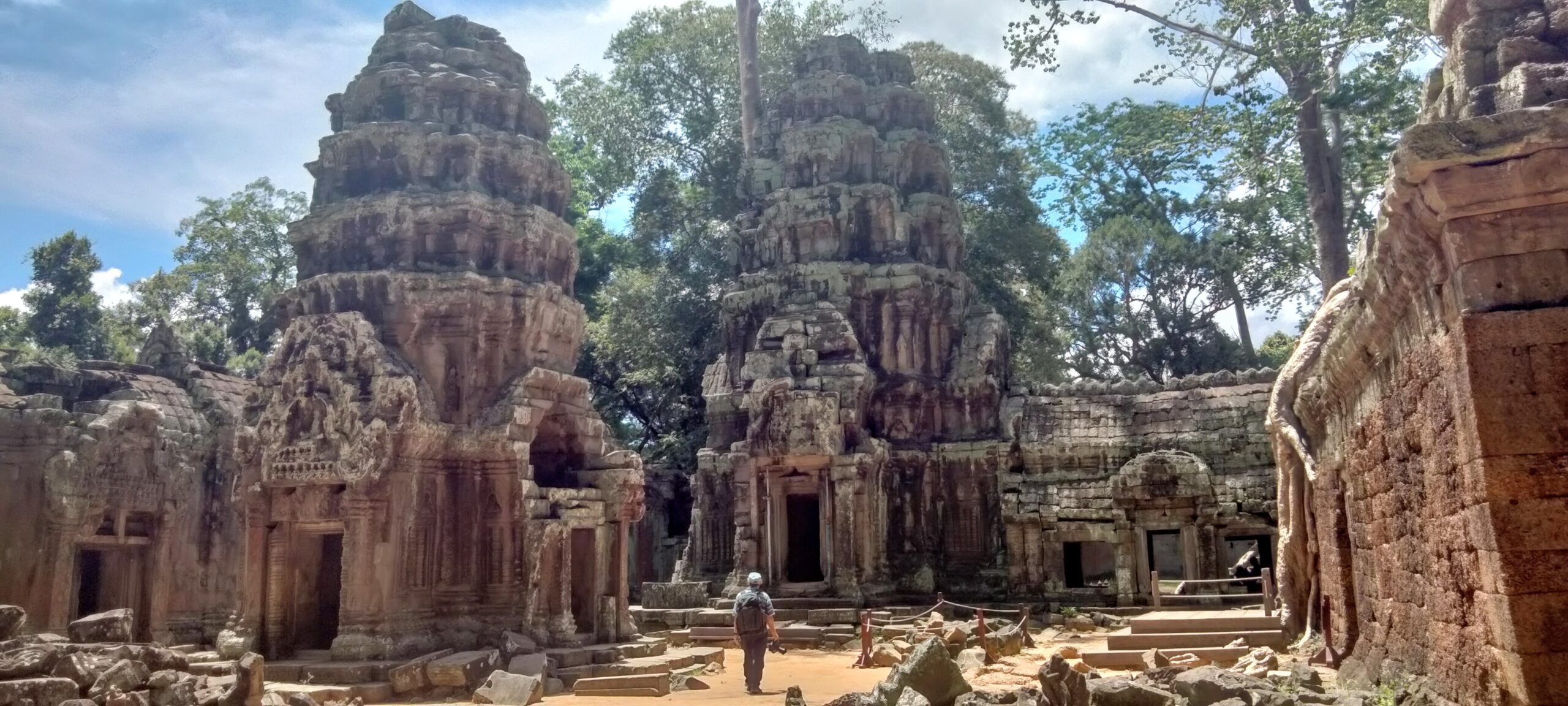
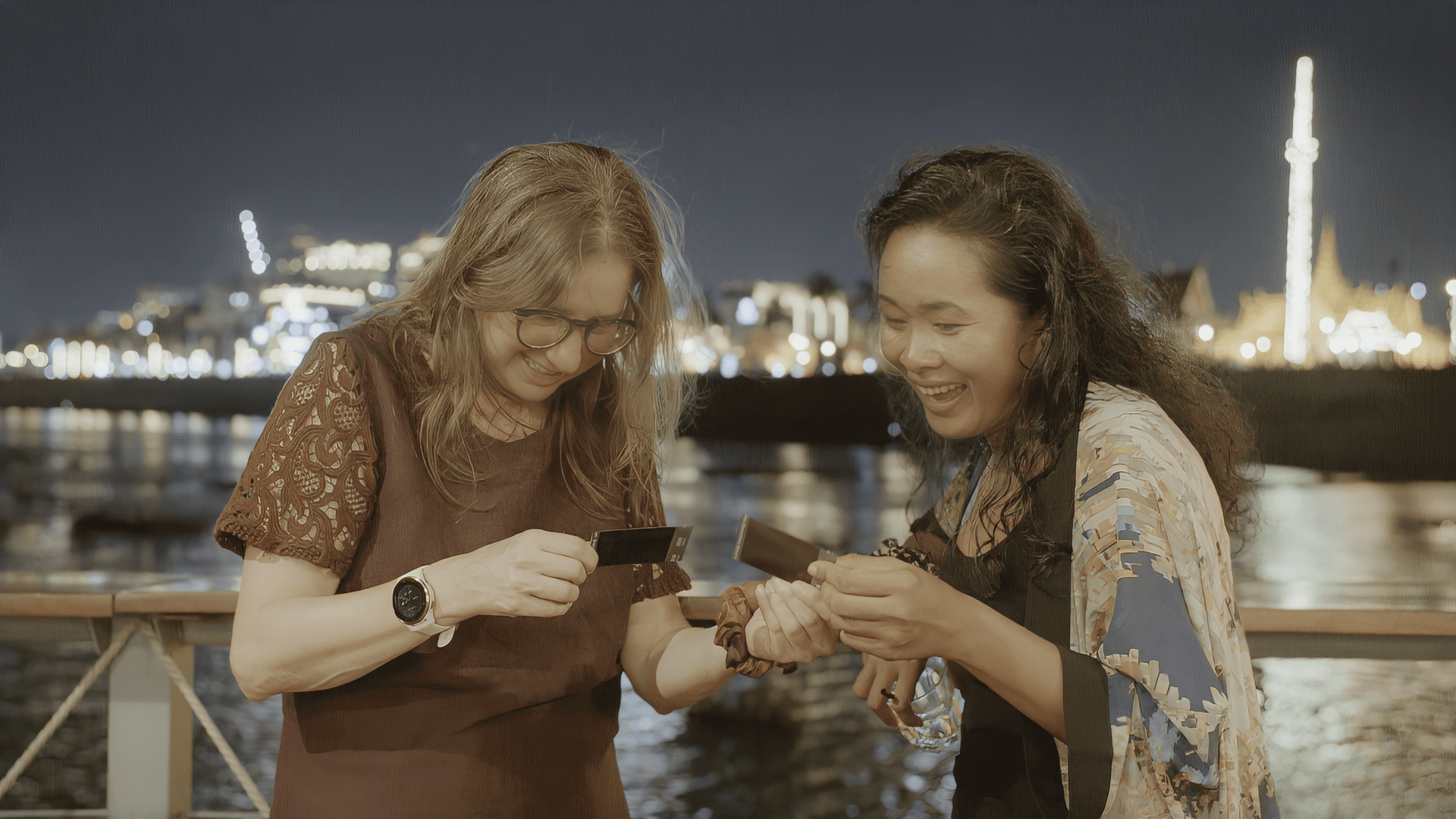
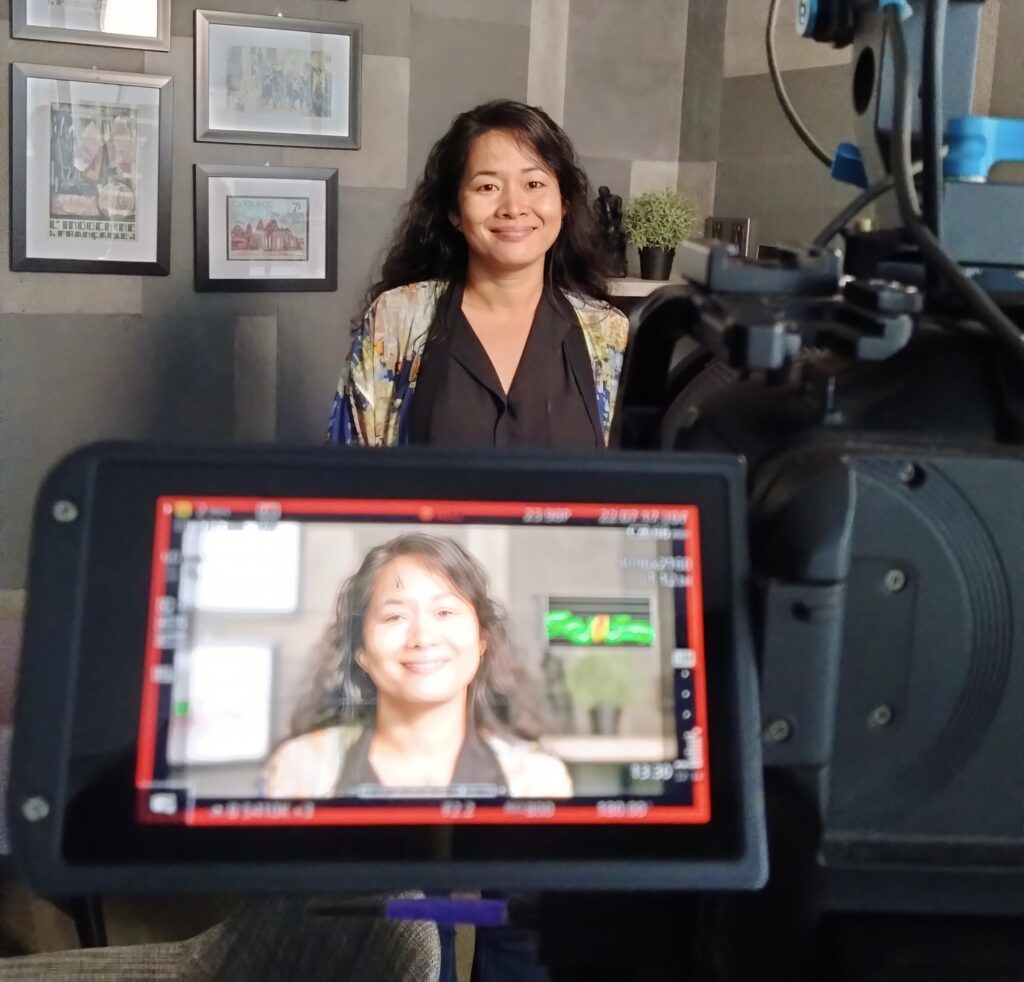
Deleted Scenes: Banteay Chhmar Homestay:
Deleted Scenes: Foreign Movies About Cambodia:
Deleted Scenes: Foreign Movies About Cambodia:
33 and Me Book Club: First They Killed My Father
Join us on Saturday, August 2 at 9am MT / 11am ET for a discussion on the memoir by Luong Ung
E-mail Stephanie@CinemaNomad.TV for access to Zoom meeting
